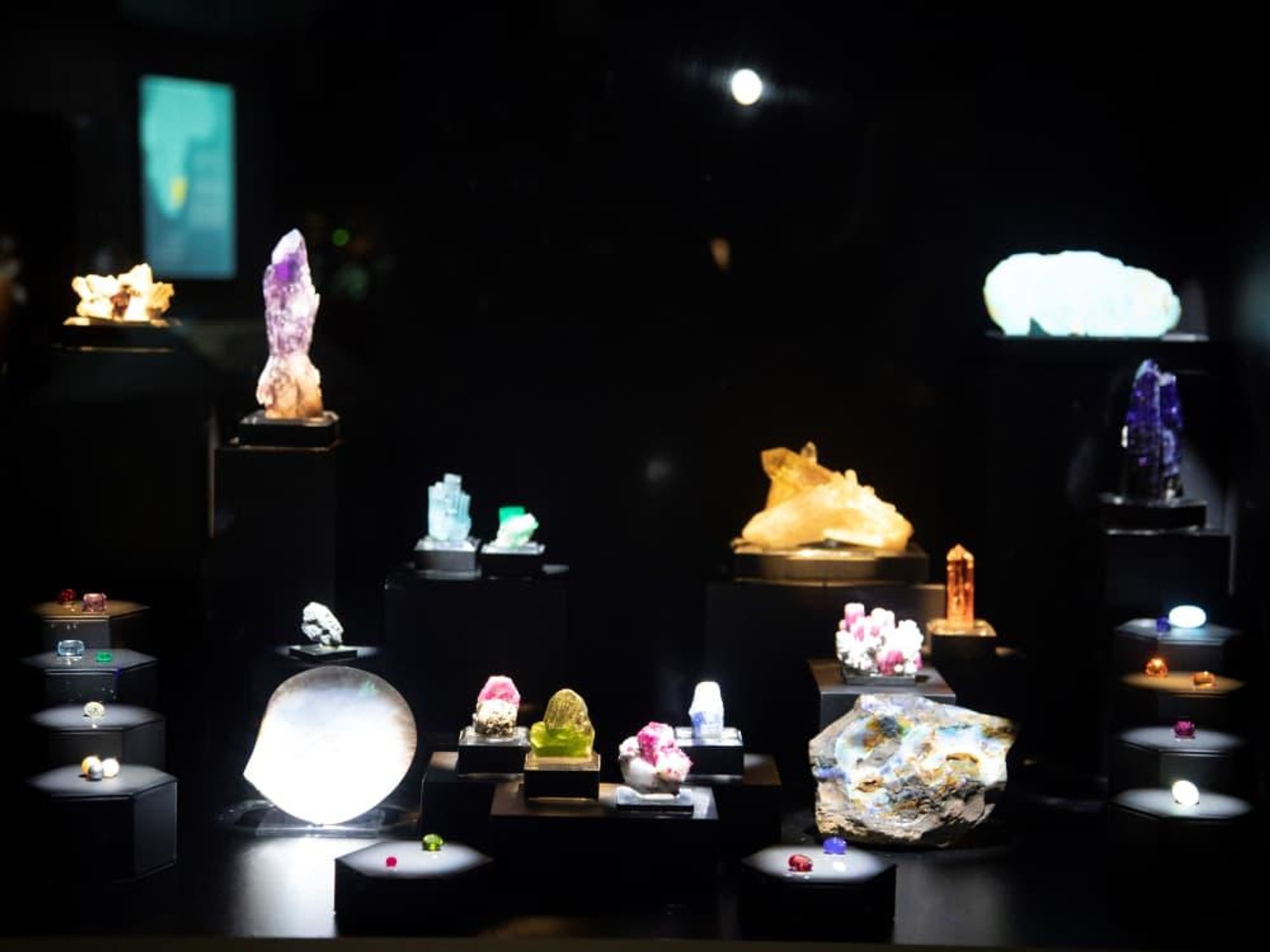Dazzling and bright
Dallas' Perot Museum puts new shine on its crown-jewel attraction

The Perot Museum of Nature and Science has put new polish and shine on one of its marquee attractions. The Lyda Hill Gems and Minerals Hall has been refreshed and reopened with four signature displays and a new initiative meant to attract the international spotlight.
The crown-jewel exhibit, which closed in early January for enhancements, reopened to the public on January 31 with a redesigned floor plan and new opportunities for guests to learn about the beautiful, rare gems and minerals on display.
The showpiece of the new display is a dazzling birthstone exhibit. A signature case highlights birthstones in both rough form (in its natural state from the ground) and faceted form (cut for artistry purposes), the museum explains. An additional display showcases exquisite jewelry created from the birthstones for each month. It will rotate 12 times per year.
Other highlights of the enhanced hall include:
- A total of 37 cases, including four new signature displays with large, easy-to-use touchscreens that present information in both English and Spanish.
- A larger case for The Eyes of Africa, a show-stopping “alien eye” fluorite from Namibia on loan from Lyda Hill. The case contains updated details about its intriguing backstory.
- A case displaying the magnificent example of stibnite with robust clusters of crystal formations recovered from an industrial mine in the Jiangxi Province of China.
- A premier case for the beloved “grape jelly” geode — a 5-foot-tall amethyst geode — that invites guests of all ages to crank it open for a glittering peek.
In addition, the luminescent “Aurora Butterfly of Peace” is on loan from owner and curator Alan Bronstein. The work of art is made up of 240 colored diamonds (some that fluoresce) in the shape of a butterfly that Bronstein says symbolizes a “spiritual connection to Earth for all humankind,” the museum says. With colors ranging from fiery orange to tranquil blue and rosy pink, the “Aurora Butterfly” took 12 years to create and is adorned with diamonds from nearly every continent on Earth, it says. On display through spring, the “Aurora Butterfly” is surrounded by a rainbow of mineral cases each dedicated to a different color.
A sampling of specimens from Texas, Colorado, Arizona and California is on display, along with those from countries around the world, including China, Mexico, Brazil, Germany, Australia, and Afghanistan.
Another part of the gallery spotlights an array of minerals such as tourmaline, rhodochrosite, aquamarine, garnet, opal, fluorite, calcite, smithsonite, pyrite, and quartz.
“By bringing the world’s most exceptional gems and minerals to North Texas, we hope to inspire guests to more deeply connect with this fascinating science,” says Dr. Linda Silver, Eugene McDermott Chief Executive Officer of the Perot Museum of Nature and Science, in a release. “With a revitalized and redesigned gallery and the addition of the new Gems and Minerals Center of Excellence, the Museum is positioned to attract the most significant pieces in the world. We will be a leading authority for gem and mineral education for years to come.”
A new initiative
The updated hall is just one step of the Perot Museum’s new strategic focus to shine internationally in the gems and minerals realm, museum officials say. The second effort will be its Gems and Minerals Center of Excellence, which "will elevate its status as a core for education and communication about the ever-changing sciences," the museum says.
Spearheading the second strategic initiative is Kimberly Vagner, who recently joined the museum as director of the Gems and Minerals Center of Excellence. She will curate the collection, guiding the museum's “loan-versus-own” method of displaying, creating ways to increase interest in gems and minerals, and developing educational programs for visitors of all ages.
The museum also has established the Perot Museum Gems and Minerals Legacy Award to recognize support for its Gems and Minerals Center of Excellence and outstanding contributions to the gems and minerals community. Lyda Hill is the 2019 recipient.
“Lyda Hill’s conviction that science holds the key to bettering the world for humanity led her to support the Perot Museum as a founding donor from the very beginning,” says McFarland in the release. “She supports the museum in many ways — among them, for nearly 15 years, she has loaned exquisite minerals to the Perot Museum collection for millions of guests to enjoy and in hopes of inspiring a deeper understanding of the scientific wonders of gems and minerals.”
